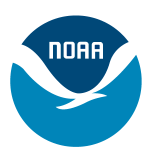- Industry: Government
- Number of terms: 30456
- Number of blossaries: 0
- Company Profile:
NOAA Coral Reef Conservation Program, National Oceanic and Atmospheric Administration, U.S. Department of Commerce
A subclass of the Anthozoa that contains the sea pens, sea pansies, sea fans, whip corals, and pipe corals. Octocorals always possess 8 tentacles and 8 complete septa (hard corals and anemones possess 12 or more tentacles and septa). They are colonial cnidarians whose polyps are connected by a tissue mass called the coenenchyme. This tissue connects the gastrovascular (digestive) cavities of all the polyps in the colony.
Industry:Natural environment
A submerged volcanic plateau dominating the western Indian Ocean, extending approximately 2,000 km between Seychelles and Mauritius. It covers an area of over 115,000 square kilometres of shallow water with depths ranging from 8 m to 150 m on the plateau, plunging to depths of 4000 m at its edges. It is the major marine ecosystem of the western Indian Ocean.
Industry:Natural environment
A subphylum of Arthropoda that includes shrimp, mantis shrimp, lobsters, crabs, water fleas, copepods, crayfish and wood lice. There are almost 40,000 described species of crustaceans. The Crustacea are mainly aquatic, but include some semi-terrestrial and terrestrial groups.
Industry:Natural environment
A subphylum of the animal phylum Chordata that contains the ascideans (sea squirts). Most adults are sessile and bear little resemblance to the other chordates. They are common inhabitants of coral reefs and mangrove roots.
Industry:Natural environment
A supercontinent that existed from about 300 to 200 million years ago. It included most of the continental crust of the Earth.
Industry:Natural environment
A synonym for algal ridge. The algal genus Lithothamnion is important in maintaining reef integrity by cementing various pieces of calcium carbonate.
Industry:Natural environment
A system that allows automatic location of information suitable for mapping. Usually involves a software system that takes geographic position data and other data (e.g., type of bottom sediment) in order to create a map. Data on processes (e.g., current speed) can be incorporated to make a geographic model of flow.
Industry:Natural environment
A technique used to obtain the 3' and 5' end of a cdna. The technique involves three sequential enzymatioc steps: reverse transcription, addition of homopolymeric tails, and polymerase chain reaction (PCR).
Industry:Natural environment
A technology based on the silencing of specific genes by double stranded RNA (dsrna). Rnai has great potential for treating many diseases, including ocular, viral diseases and cancers by silencing RNA messages, thereby preventing the production of disease causing proteins.
Industry:Natural environment
A term used to describe the excess DNA which is present in the genome beyond that required to encode proteins. The term is misleading since these regions are likely to be involved in gene regulation, and other not yet known functions; a non-coding sequence of DNA; an intron.
Industry:Natural environment
